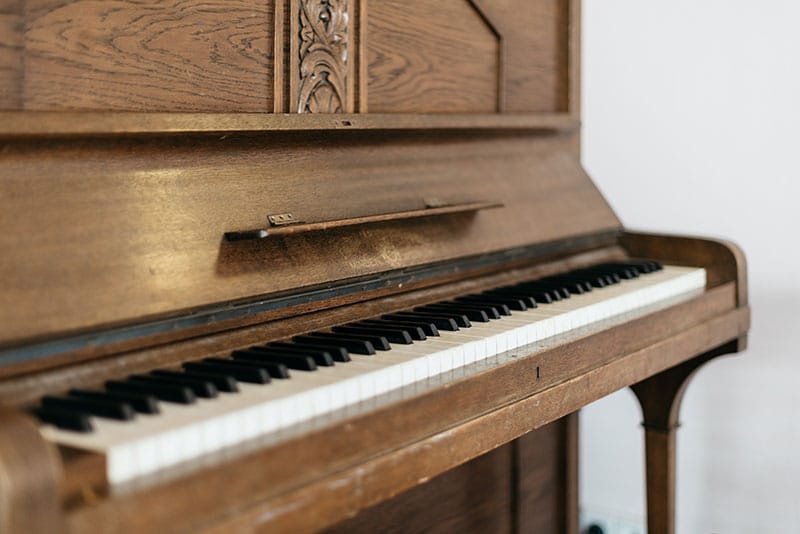The customer service team is always listening, taking notes, and quantifying complaints to ensure our products are continually improved. Due to selling directly to you, the customer, via Amazon, we can use product reviews to help us improve our existing products or help further development of new products.
Table of Contents
Musical instruments play important roles for most people. For some, they provide a calming effect and a sense of fulfillment. Checking the humidity level for musical instruments allows you to protect them. Humidity control is especially important if you have any instruments that are made of wood. This article will delve into all the different measures you ought to undertake for the best humidity control measures.
Importance of Humidity Control for Musical Instruments
Wood is a common component in most musical instruments. Keeping the wood safe from damage and moisture guarantees that your musical instruments will always be in the best conditions. Wood will release and absorb moisture even after its harvesting, curing, and transformation.
Controlling the moisture in the wood ensures that all your musical instruments will sound their best. As the wood absorbs moisture, it’ll expand, swell and become heavier. A high humidity level for musical instruments might lead to permanent warping and joints coming undone.
With stringed instruments, you can detect wood damage if the instrument becomes harder to play. It can also entail a higher than normal height, leading to the instrument being out of tune. However, a dry musical instrument will be worse than a moist one.
If the wood doesn’t retain the necessary amount of moisture, it can become brittle and break. Therefore, when the wood shrinks in a stringed instrument, it might crack from the pressure. If you notice some caving in the instrument or buzzing notes, the wood is becoming dry.
The Ideal Humidity Level for Musical Instruments
For the musical instrument to perform perfectly, the humidity has to be between 35 to 55%. Using a musical instrument hygrometer will assist in pinpointing the humidity levels and controlling them successfully. A good hygrometer will indicate when there is relative humidity for musical instruments.

You ought to have a hygrometer in all the rooms where you store your instruments. It negates high or low humidity, thus eradicating the musical instruments’ chances of absorbing or releasing moisture. With both digital and analog hygrometers to choose from, you can pick the one you’re most comfortable with.
Here are the different humidity levels to maintain for different instruments:
- Pianos – Maintain a room humidity level of around 40%. You should also avoid sunlight and direct heat sources.
- Guitars – Most shops will maintain a 50% humidity level. However, while at home, you can work between 35 to 50%. This will apply to all instruments with frets as well.
How to Control Humidity with a Hygrometer
Before opting to use a hygrometer, you have to understand the different use case scenarios. It’s an essential meteorological science instrument that will precisely measure the amount of humidity (water vapor) in the air.
The functioning of most hygrometers will depend on their designs. Before buying a hygrometer, you need to know how to decipher one. Attaining the precise readings guarantees that you will know how to calibrate the hygrometer for accurate results.
Calibrating the hygrometer will depend on your model. With some models, you have to rotate the entire hygrometer’s movement until you attain precise readings. For others, a screwdriver will be enough to calibrate the hygrometer.
After calibration, you must test the accuracy of the hygrometer. You don’t want incorrect readings which might destroy your musical instruments. To test the hygrometer, you can wrap it in a damp cloth. The hygrometer should give a reading of 95%. If it doesn’t, calibrate it until the indicator shows the right figure.
Secondly, you can use a zip lock bag and some table salt. Pouring some water on the salt to make it damp and placing it in the bag with the hygrometer should give you a 75% reading after six to eight hours. After testing, you can use the hygrometer, however, you should consider recalibration after every six months.
With musical instruments, you can place one hygrometer in the storage room or get a hygrometer for all your instruments. If you have room for your instruments, one hygrometer will be enough. Check the readings frequently to ensure that they are between 35 and 55%. The same case applies to those who have different hygrometers for their instruments.
Tips to Store Your Musical Instrument and Hygrometer
As a musical hobbyist, protecting your instruments from humidity damage is a priority. Using a hygrometer to control and maintain humidity control for musical instruments will easily protect all your wooden musical instruments. These will entail:
- Violins
- Guitars
- Pianos
Before getting a hygrometer for your musical rooms, you need to assess the available humidity levels. From which you can understand the different hygrometers which might work best. Also, testing the humidity levels will be easier when you use a humidity monitor.
Have Good Storage Measures
If you have cases for your musical instruments, you should consider musical instrument storage after use. Doing this guarantees that the instruments will be safe from any cool or warm weather elements. Besides, the cases are convenient and have a design that suits long term storage of the instruments.
Having a hygrometer and the best cases for your instruments isn’t enough. If you’re not planning on using the instruments for a while, you need to consider cleaning the instruments to guarantee that they can be in great condition. Besides, this will prevent any damage during storage.
Buy a Good Hygrometer

Using a case can be a short-term solution to your humidity problem. A hygrometer, on the other hand, can solve all these issues completely. A good hygrometer, however, will be necessary to ensure that your musical instruments are safe. The ThermoPro Digital Hygrometer is perfect for homes since you can velcro it on any surface. With its super slim profile, you can attach it to different instruments for the best humidity readings. Besides, there is an LCD for checking the humidity levels, and it’s easy to see under broad daylight. You will also enjoy manual control buttons for calibration and changing user settings.
Check the Size of Your Room
Properly controlling the humidity levels in a room will require you to discern its size. The size affects the humidity levels since a hygrometer will always cover a specific amount of space or area. To pick the right hygrometer for the rooms, you must consider knowing the room’s size and the square footage that the hygrometer can cover.
Constant Temperatures
To guarantee that the hygrometer will work successfully, you should maintain the same temperatures for all your rooms. If you do this, it’s easier to know when the hygrometer readings are wrong. It also allows you to calibrate the hygrometer to serve your musical instruments efficiently easily.
You should as well consider looking for climate-controlled rooms. These will maintain the temperatures you would like and make it easier for your hygrometer to perform efficient checks. Climate controlled rooms will function perfectly towards ensuring that no damage will happen to all your musical equipment.
Read Your Instruments
When there is a humidity effect on the instruments, you will detect some changes in how they play. Train yourself to know how all your musical instruments perform to note when there are changes easily. Understanding your instruments can guarantee that you will know if the hygrometer is working.
Final Take
After understanding how to use a hygrometer, you need to pick one which will work depending on the available musical instruments. If you want something for all the different instruments, you can consider picking one with the best features and a small footprint.
If you don’t overlook the essence of humidity control for your musical instruments, you will prevent any potential damage. Using the right tools and maintaining the best conditions can keep all your instruments safe. Check our ThermoPro Hygrometer to solve all your humidity hurdles.











